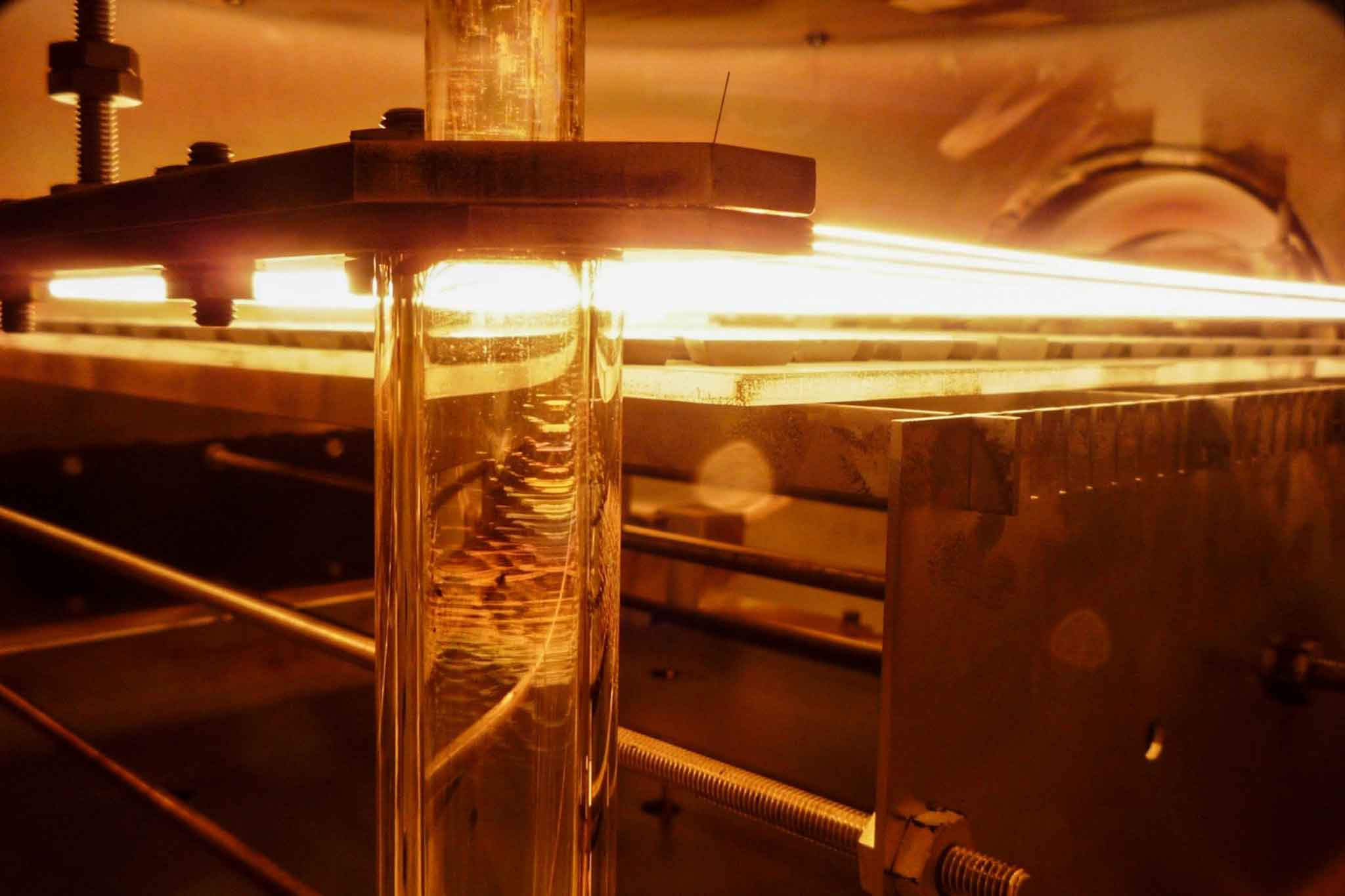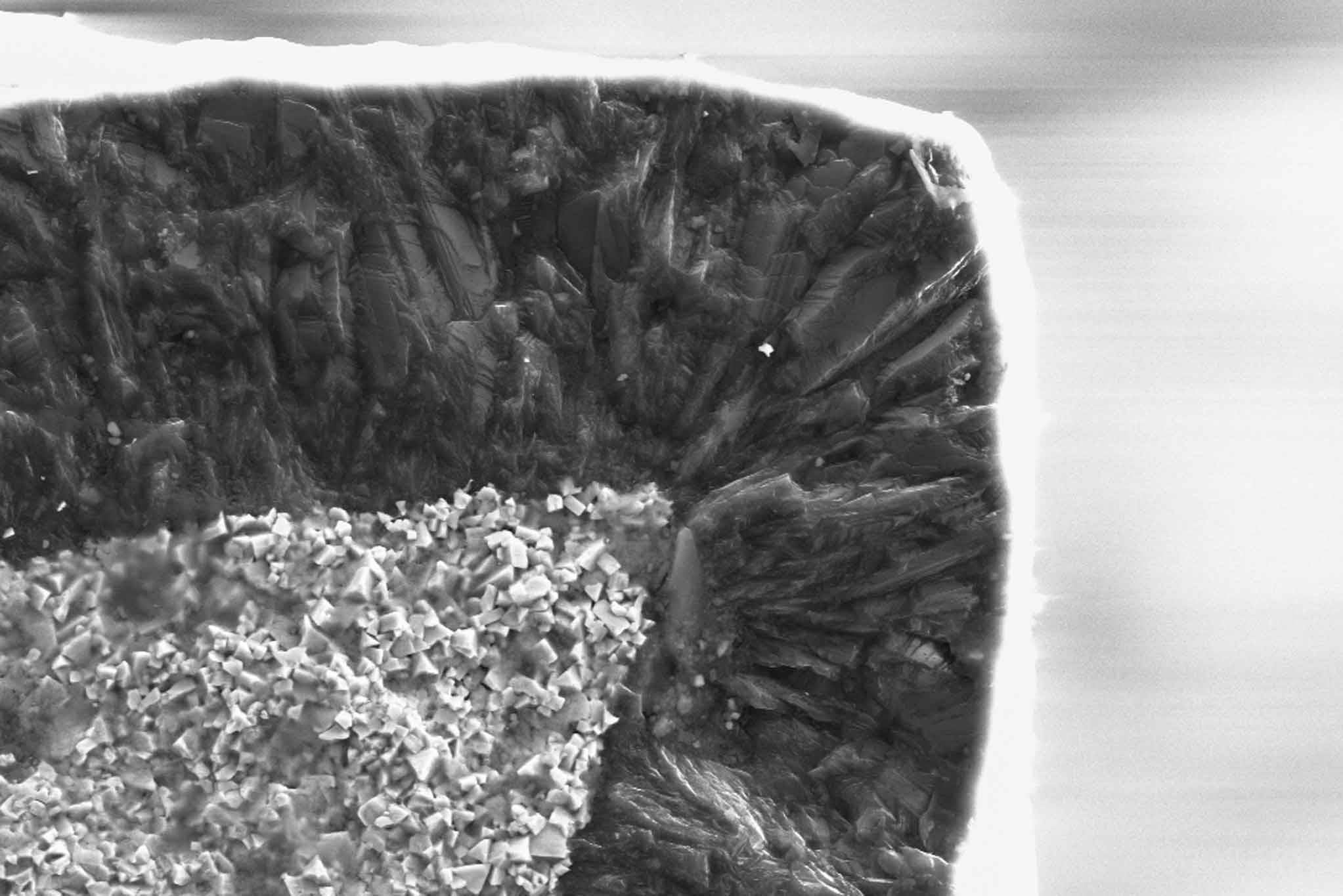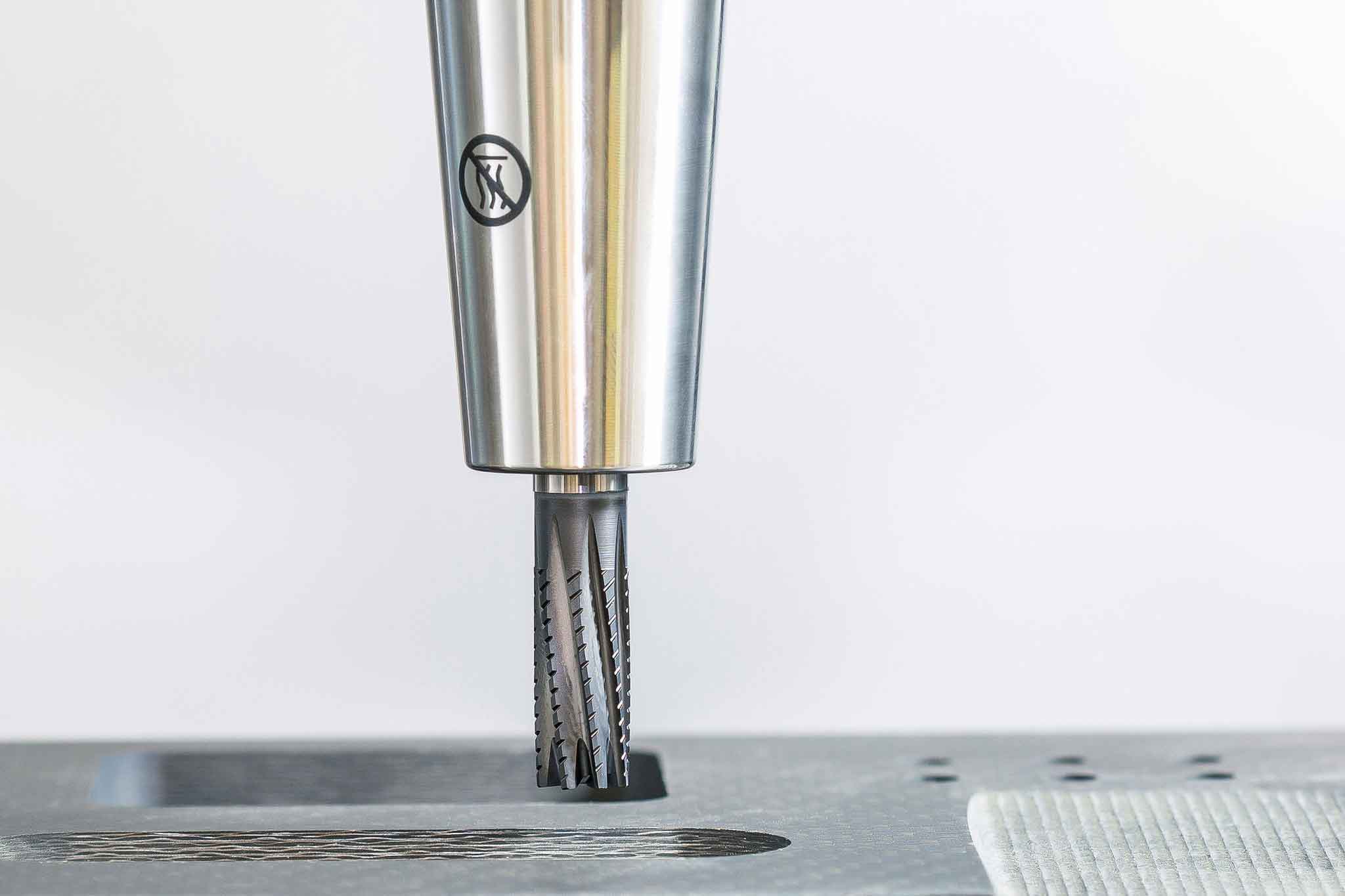22.11.2023
Development of customised diamond coatings
With its in-depth knowledge in the field of coating technology, MAPAL also develops extremely hard and wear-resistant diamond coatings for machining materials such as CFRP, ceramics, graphite and aluminium alloys. MAPAL’s machining solutions thus achieve longer tool lives and more process reliability especially for applications in the automotive and aerospace industry, in the die & mould sector and in medical technology.

Der Werkzeughersteller verfügt an seinem Standort in Aalen sowie in seinen Kompetenzzentren über Beschichtungstechnologien, um Wendeschneidplatten und Vollhartmetallwerkzeuge mittels PVD- oder CVD-Verfahren zu beschichten. Die Auswahl des Verfahrens richtet sich nach den jeweiligen Anwendungsparametern. Für die Trockenbearbeitung und hohe Schnittgeschwindigkeiten wird in der Regel CVD gewählt, bei instabilen Bearbeitungssituationen oder schwierigen Zerspanungsbedingungen kommen die zäheren PVD-Schichten zum Einsatz.
Kommt es beim Bearbeiten von Werkstoffen vermehrt zu adhäsiven Verschleißvorgängen, ist der Einsatz von diamantähnlichen Kohlenstoffschichten (DLC) sinnvoll. DLC-Schichten werden ebenfalls mit PVD oder einem plasmaunterstützten CVD-Verfahren abgeschieden. Diese Schichten werden von einer Mischung aus sp2-hybridisierten Kohlenstoffatombindungen (Graphit) und solchen mit sp3-Hybridisierung (Diamant) gebildet. Das Mischungsverhältnis bestimmt dabei die physikalisch-mechanischen Eigenschaften der Schichten. Je mehr sp3-Atombindungen enthalten sind, desto härter ist die Schicht.

Neue Beschichtungsverfahren dank CVD-Diamant-Reaktoren

„In den vergangenen Jahren haben wir uns intensiv mit der Verbesserung des Diamantbeschichtungsprozesses beschäftigt und MAPAL bei der Werkzeugherstellung neue Möglichkeiten eröffnet“, berichtet Dr. Martin Kommer, Teamleiter R&D Cutting Material / Coating bei MAPAL. Der Werkzeughersteller habe nun die komplette Werkzeugauslegung von der passenden Geometrie über die Auswahl eines geeigneten Hartmetalls bis hin zur Beschichtung in der eigenen Hand. Damit können Werkzeuge noch gezielter auf die Anforderungen der Kunden hin ausgelegt werden. Die Entwicklungsabteilung in Aalen verfügt über ein eigenes Zerspanungszentrum, das neue Werkzeuge unter anderem auf Standzeit und Verschleißverhalten untersucht.
Da der Beschichtungsprozess über eine chemische Reaktion in Kombination mit einer mechanischen Verklemmung funktioniert, sind bei der Vorbehandlung das definierte Ätzen der Hartmetalloberfläche und eine Bekeimung wichtig. Weil dafür nicht jedes Hartmetall infrage kommt, evaluiert MAPAL geeignete Substrate. Ob bei der Beschichtung feinkörnige mikrokristalline oder nanokristalline Schichten entstehen, wird über Temperatur, Druck und Fluss der jeweiligen Reaktivgase während des Prozesses gesteuert. Theoretisch können per HF-CVD Schichten bis zu einer Dicke von 50 µm erzeugt werden. Für die Beschichtung seiner Werkzeuge beschränkt sich MAPAL derzeit auf den Bereich zwischen 3 µm und 15 µm, abhängig der jeweiligen Anwendung.

Kontakt
Kathrin Rehor Public Relations Kathrin.Rehor@mapal.com Tel.: +49 7361 585 3342



